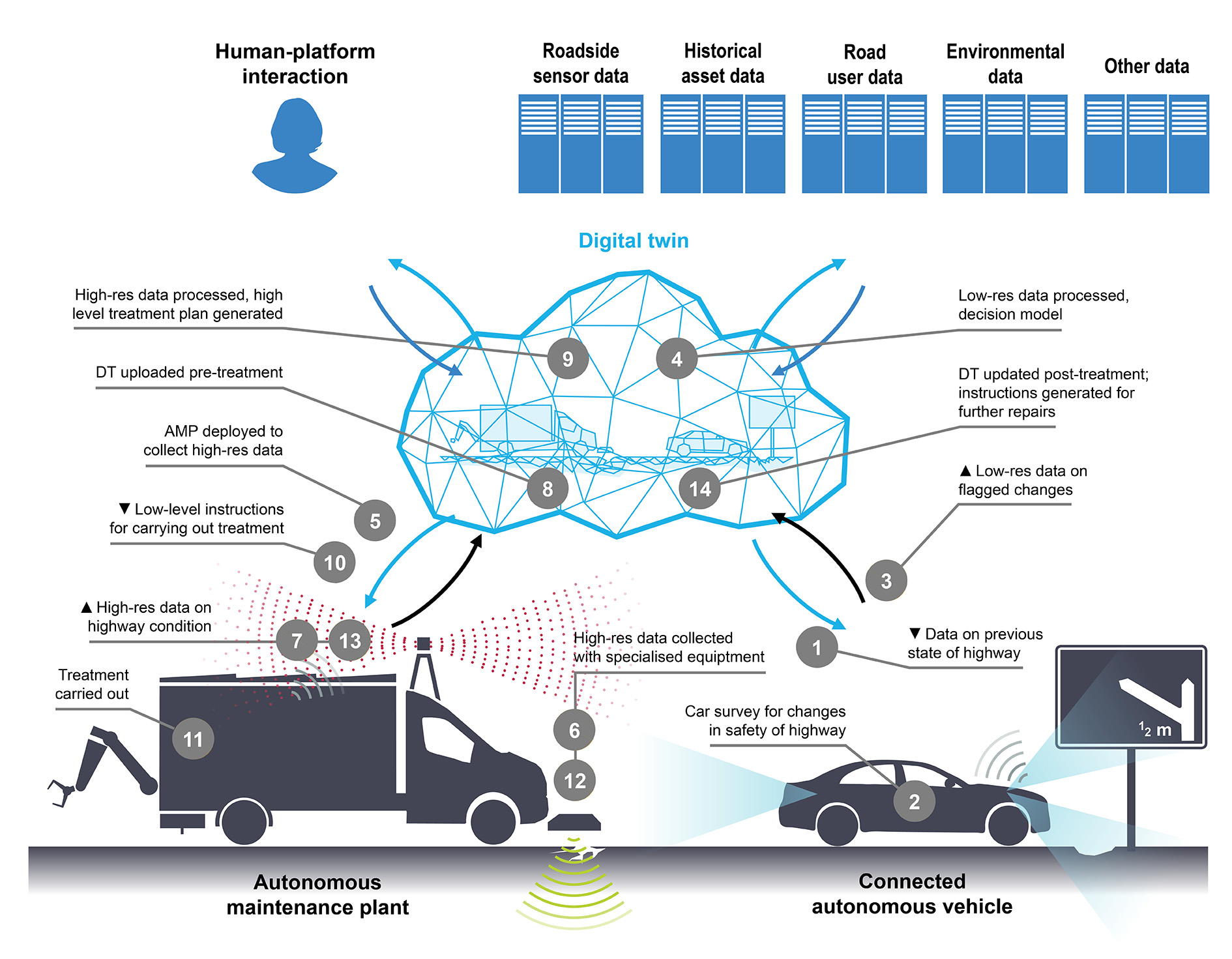
Cambridge engineers working on a £17 million 'Digital Roads of the Future' initiative – aimed at jump-starting the digital transformation of our road network – have been interviewed by BBC Breakfast on how their research is helping to automatically detect and tackle potholes on the nation’s roads.
We are looking at materials to build resilience into the structure of roads. The aim is to eventually have no potholes, but a road can heal itself.
Dr Damian Palin
In the BBC Breakfast interview broadcast on Monday 15 January (National Pothole Day), the Digital Roads research team demonstrated how Digital Twins (virtual replicas) and data science can be used to determine early intervention of road damage, while smart materials and robotic monitoring can be useful for repair strategies.
The University of Cambridge is working with industry partners National Highways and Costain on this once-in-a-century transformation to enable safer and greener road networks that are resilient and can measure and monitor their own performance over time.
The Digital Roads project is led by Ioannis Brilakis, Laing O'Rourke Professor of Civil and Information Engineering, who is joined by co-investigators Professor Fumiya Iida and Professor Abir Al-Tabbaa. The research team includes Cambridge’s Dr Lavindra de Silva, Dr Stephen Green, Dr Damian Palin, Dr Ran Wei, Dr Jie Xu and Ms Xiaofang Wen, and visiting researchers Dr Lilia Potseluyko, Dr Hussam Taha, Dr Alix Marie d’Avigneau and Dr N’zebo Richard Anvo from industrial partner, Costain. The Digital Roads project also supports a cohort of PhD students. They are: Percy Lam, Diana Davletshina, Joseph Stephenson, Ben Harries, Ashwathy Rajendran, Fergus Mok, Rui Kang and Samuel Schaefer.
Potholes form a significant threat to the safety of cyclists and drivers. Fixing a pothole is costly for local and national road authorities, involving large amounts of material, work hours and road closures.
When small cracks form on the surface of a road, water can then penetrate the road, which, when combined with extreme cold weather, can lead to further damage to the road surface, with the water turning to ice, thus expanding the cracks. This action, repeated over and over, can lead to the formation of damaging potholes.
Digital Roads proposes a way of detecting cracks that form on the surface of a road, monitoring their condition and assessing the most effective way to repair damage in a timely and safe manner. All while using materials that are both good for the environment, sustainable and which can be applied to the road efficiently.
Speaking to the BBC, Dr Damian Palin, Senior Research Associate in Smart Materials, said research is underway looking at materials to build resilience into the structure of roads.
“We are trying to enhance these materials through their environmental impact or performance by adding things like fibres and trying to make them self-heal. The aim is to eventually have no potholes, but a road can heal itself,” he said.

The proposed structure of the Digital Roads platform showing the automatic collection of data on the condition of the road, which is used to create a Digital Twin to analyse and assess changes to the road condition using data science. The Digital Twin will determine how and where to deploy autonomous plant to undertake repairs. Credit: University of Cambridge.
Professor Ioannis Brilakis added that the research team is currently developing a way of using anonymised car sensor data to create a thorough digital map of roads, including the size of cracks and where they are located, so problems can be pinpointed in real time, followed by focused repairs and ongoing monitoring.
By 2030, the Digital Roads team aims to develop outcomes to a commercial stage and to follow the same development journey for other road assets such as bridges and tunnels, followed by the entire strategic road network by 2040. This will ensure that roads become safer, serviceable at a lower cost, and maintained more efficiently and sustainably, reducing the emissions generated by roadworks, and preventing unnecessary delays to motorists.
Adapted from a Digital Roads of the Future news article.

